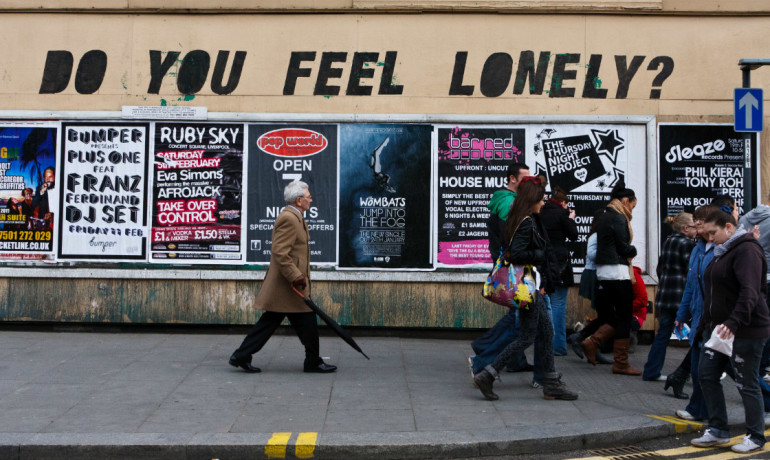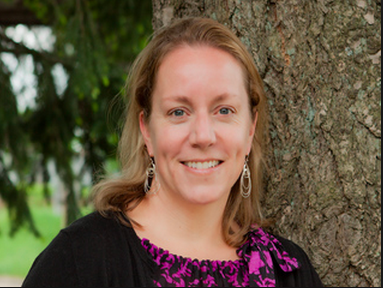OPINION: There’s an effective way to guide our students through mental health problems

Peer support is too often taken for granted by policymakers and administrators focused on staffing and services. Credit: Sarah Hertwig for The Hechinger Reporter
By Chelsea Waite and Julia Freeland Fisher, Reprinted from The Hechinger Reporter
New CDC data out last month revealed that more than 4 in 10 teens report feeling “persistently sad or hopeless.” The data reflects what parents and educators have learned intimately over the last two years: Young people are struggling with mental health. Unfortunately, schools tend to operate on a shoestring, offering a “skeletal” system of mental health services. Some school psychologists and social workers manage caseloads in the thousands.
President Biden promised more funds to address the crisis last month. Even before that, some states and districts had dedicated federal Covid relief dollars to hiring more professionals.
These investments are smart and long overdue. But they may not turn the tide on a crisis that has been unfolding since long before the pandemic began. While trained professionals are key to addressing acute mental health challenges, they are not always best positioned to detect those challenges early; nor do they offer the only way to prevent mental health issues in the first place.
For a better system long-term, schools should bank on a promising mental health support resource surrounding students: their peers.
The power of peer networks is well-documented in research. “Peers can often form a stronger therapeutic bond with the people they counsel because they have experienced mental health struggles themselves,” wrote life sciences consultant Nicola Davies about the benefits of peer counseling. Positive peer dynamics have been shown to support learning, prosocial behavior and social-emotional well-being.
But peer support is too often taken for granted by policymakers and administrators focused on staffing and services. That’s a mistake, and one that some schools are actively countering.
For example, in Pomona, California, Garey High School operates a peer counseling center, which trains students to navigate conversations about mental health issues, recognize warning signs and refer peers to professional counselors. Other programs activate peers as advocates for those facing mental health challenges. Bring Change to Mind has demonstrated success with student-run clubs to end stigma and build awareness around mental health; the Health Information Project has trained over 15,000 teen peer health educators to facilitate class discussions about issues ranging from depression to abuse.
Peers can also provide what researchers dub “supportive accountability,” encouraging one another to persist with treatment — including treatment through high-quality mental health apps that could help large numbers of teens if they could access the apps and stick with them. Jean Rhodes, a leading mentoring researcher, has written: “Engaging youth in mental health services has always been a challenge, and self-administered [mental health apps] are no exception.” Her lab has found that enlisting “non-professionals,” including peers, can yield dramatic increases in engagement and adherence to high-quality online interventions.
Peer supports offer something that professionals often can’t, and vice versa.
These models don’t eliminate or compete with mental health professionals. Instead, they enlist peers as close, credible messengers who are especially attuned to one another’s struggles. Peer supports offer something that professionals often can’t, and vice versa.
As a case in point, peer-to-peer programs can be a source of culturally sensitive support when colleges’ and K–12 schools’ counseling staffs are overwhelmingly white. A MassINC Polling Group survey last October found that Black, transgender and first-generation college students reported using peer counseling more often than other students, and were more likely to prioritize finding a peer counselor with identities or life experiences similar to their own.
Peers can also offer protection against mounting rates of loneliness, a proven precursor to more serious mental health challenges.
Fostering peer “connectedness” is key. Peer Group Connection, for example, is a school-based program in which older students meet regularly with groups of younger peers to help strengthen relationships and practice academic and social skills.
Other approaches nudge students to forge new peer connections themselves. Two colleges recently found that Nearpeer, a platform that helps college students identify potential friends with similar interests, majors and experiences, increased students’ sense of connectedness.
In another recent study, Nod, an app that helps young people practice social skills, decreased feelings of loneliness for psychologically vulnerable college students after only a few weeks of use. Nod is currently being piloted in eight Colorado school districts with high schoolers, and is seeing promising early results.
Tools like Nearpeer and Nod are a refreshing departure from traditional social media that more often exploit loneliness than combat it. Technology anchored in research and focused on connection and engagement, rather than on clicks and ads, can increase healthy habits and pro-social behaviors — both online and off. Peers can be a source of sustainable change.
From a liability perspective alone, peer counseling and support models may feel risky. But advocates for these models have students and families in their corner. About three-quarters of parents in a national survey agreed that students trained to talk with their peers about mental health would better understand the challenges that teens face and would improve the odds that teens would speak up about mental health concerns.
Among college students, the MassINC survey found that one in five already use peer counseling. And of those who don’t, 62 percent were interested in doing so.
Savvy education leaders flush with federal funding are aware of the risk of adopting staff-heavy “programs du jour” only to have to ditch them when the money runs out. Pairing staff with strategies that activate the power of peer networks can be an antidote — and provide the fuel needed to foster connectedness in the long run.
Chelsea Waite is a senior researcher at the Center on Reinventing Public Education.
Julia Freeland Fisher is the director of education research at the Clayton Christensen Institute.
This story about school mental health services was produced by The Hechinger Report, a nonprofit, independent news organization focused on inequality and innovation in education. Sign up for Hechinger’s newsletter.To access the resource, please click here.








